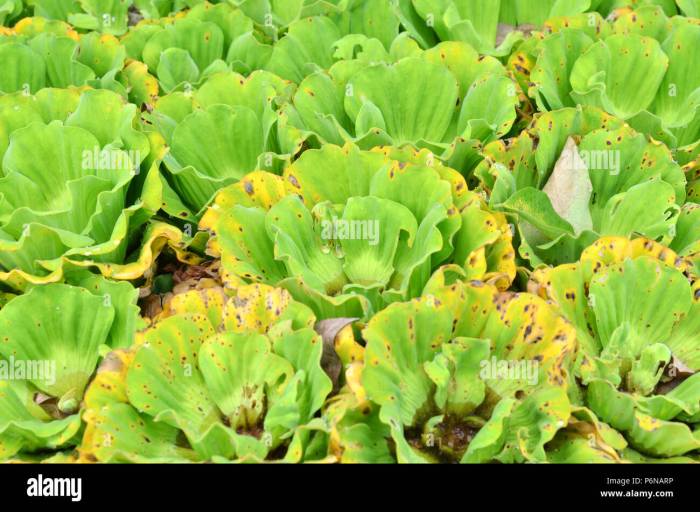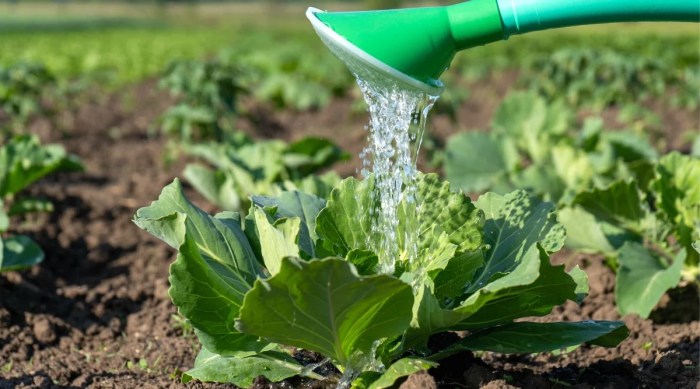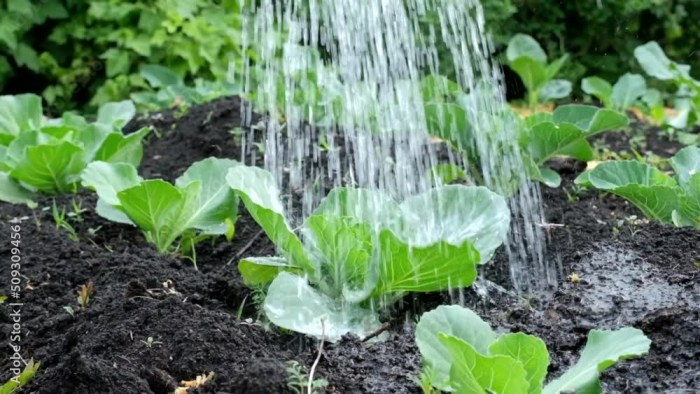How Much to Water Cabbage Plants
Cabbage Watering Needs: A Comprehensive Guide

Source: alamy.com
How much to water cabbage plants – Providing your cabbage plants with the right amount of water is crucial for healthy growth and a bountiful harvest. Understanding the specific water requirements at different growth stages, considering soil type and environmental factors, and employing efficient irrigation methods are key to success. This guide provides detailed information to help you optimize your cabbage watering practices.
Water Requirements Based on Growth Stage

Source: epicgardening.com
Cabbage water needs vary significantly throughout its life cycle. Seedlings require gentle watering to avoid root rot, while mature plants need consistent moisture to support head formation. Overwatering or underwatering at any stage can negatively impact yield and quality.
| Growth Stage | Frequency | Amount per Plant | Soil Moisture Considerations |
|---|---|---|---|
| Seedling (4-6 weeks) | Daily or every other day, depending on weather | 1/2 – 1 liter (0.13 – 0.26 gallons) | Keep soil consistently moist but not soggy. Avoid overhead watering to prevent damping-off. |
| Vegetative Growth (6-8 weeks) | Every other day to daily, depending on weather | 1-2 liters (0.26 – 0.53 gallons) | Maintain evenly moist soil. Allow the top inch of soil to dry slightly between waterings. |
| Head Formation (8+ weeks) | Daily, especially during hot, dry weather | 2-3 liters (0.53 – 0.79 gallons) | Keep soil consistently moist. Monitor soil moisture closely to prevent wilting. |
Insufficient watering during seedling stage can lead to stunted growth and weak plants, while excessive watering can cause damping-off (a fungal disease). During vegetative growth, underwatering results in smaller plants and reduced yield, while overwatering can lead to root rot. In the head formation stage, consistent moisture is essential for optimal head development; underwatering will result in small, poorly developed heads, and overwatering can cause splitting or cracking.
Soil Type and Watering Frequency
The type of soil significantly influences how frequently you need to water your cabbage. Sandy soils drain quickly, requiring more frequent watering, while clay soils retain water longer, necessitating less frequent watering. Loamy soils offer a good balance.
- Sandy Soil: Requires frequent, lighter watering to prevent drying out. Water more often, but with smaller amounts.
- Loamy Soil: Offers good drainage and water retention, allowing for a moderate watering schedule.
- Clay Soil: Retains water well, requiring less frequent but deeper watering. Ensure adequate drainage to avoid waterlogging.
Overwatering in sandy soil may lead to nutrient leaching, while underwatering causes wilting and stunted growth. In clay soil, overwatering causes waterlogging and root rot, while underwatering results in slow growth and smaller heads. Loamy soil provides a good balance, but consistent monitoring is still necessary.
Environmental Factors and Watering
Temperature, sunlight, and humidity greatly impact cabbage water needs. Hot, sunny, and windy conditions increase evaporation, requiring more frequent watering. Conversely, cooler, cloudy conditions reduce water loss, allowing for less frequent watering.
Watering cabbage plants depends on the weather; aim for consistently moist soil, but avoid waterlogging. The frequency is quite different from succulents, like the amount you need to water a jade plant, as discussed in this helpful guide: how much do you water a jade plant. Ultimately, for cabbages, regular watering is key, but always check the soil moisture before adding more water to prevent root rot.
Adjust watering schedules based on weather forecasts. During heat waves, increase watering frequency and amount. During periods of rain, reduce watering frequency or skip it altogether if the soil is already moist. Drought stress in cabbage plants manifests as wilting, leaf curling, and stunted growth.
Irrigation Methods, How much to water cabbage plants

Source: ftcdn.net
Several irrigation methods can be used for watering cabbage. Each has its own advantages and disadvantages in terms of water efficiency, cost, and plant health.
| Irrigation Method | Effectiveness | Water Efficiency | Cost |
|---|---|---|---|
| Drip Irrigation | Excellent, delivers water directly to the roots | High, minimizes water waste | Moderate to High (initial setup cost) |
| Overhead Watering | Good, but can lead to disease if leaves remain wet | Low, water is lost through evaporation | Low |
| Soaker Hoses | Good, provides consistent moisture to the root zone | Moderate, less water waste than overhead | Low to Moderate |
A step-by-step guide for setting up a drip irrigation system for cabbage involves planning the layout, installing the tubing and emitters, connecting to a water source, and testing the system for leaks.
Monitoring Soil Moisture
Regularly checking soil moisture is essential for effective watering. Several methods can be used, each providing a different level of precision.
- Soil Moisture Meter: Provides a numerical reading of soil moisture content.
- Feeling the Soil: Digging down a few inches and feeling the soil’s texture can indicate dryness or wetness.
- Observing Plant Wilting: Wilting indicates insufficient water, although this is a late indicator.
A simple soil moisture monitoring system can be created using readily available materials like a length of PVC pipe and a water level indicator. Interpreting soil moisture readings requires understanding the meter’s scale or the feel of the soil. Adjust watering based on these readings and plant needs.
Troubleshooting Watering Issues
Several issues can arise from improper watering. Yellowing leaves, wilting, and root rot are common symptoms. These issues can often be confused with nutrient deficiencies.
Overwatering is addressed by improving drainage and reducing watering frequency. Underwatered plants need increased watering and potentially mulch to retain moisture. Nutrient deficiencies require targeted fertilization to correct the imbalances, and symptoms can often be addressed with appropriate nutrient supplementation.
FAQ Explained: How Much To Water Cabbage Plants
Can I use rainwater to water my cabbage plants?
Yes, rainwater is an excellent choice as it’s naturally soft and lacks chlorine or other chemicals that can harm plants.
What are the signs of nutrient deficiency that might be mistaken for watering problems?
Nutrient deficiencies can manifest as yellowing leaves, stunted growth, or discoloration. Unlike watering issues, these problems are usually not solved by simply adjusting watering. Soil testing can help identify specific nutrient deficiencies.
How often should I check the soil moisture?
Check soil moisture daily, especially during hot and dry weather. Feel the soil a few inches down; if it feels dry, it’s time to water.
My cabbage leaves are wilting, is it underwatering or overwatering?
Wilting can be a sign of both. Check the soil; if it’s bone dry, it’s underwatering. If it’s soggy and the leaves are yellowing, it’s likely overwatering.





















